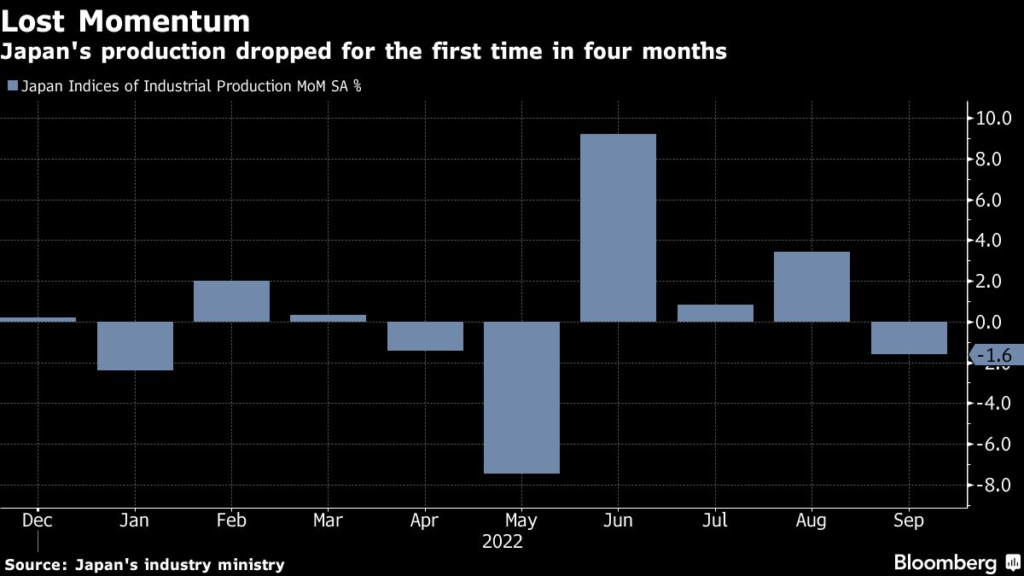Japan’s factory output fell in September for the first time in four months, as a slump among carmakers weighed on an otherwise solid gain for the third quarter.
(Bloomberg) — Japan’s factory output fell in September for the first time in four months, as a slump among carmakers weighed on an otherwise solid gain for the third quarter.
Industrial production declined 1.6% from August, turning negative after three straight months of increase, according to the industry ministry Monday. Economists had forecast a 0.8% drop. The decrease in carmakers’ output dragged on overall figures by 1.85 percentage points, accounting for most of the fall.
Still, production in the third quarter saw output gaining 5.9%, a positive sign for Japan’s continued recovery from the pandemic.
“Production plans by automakers don’t suggest a strong rebound in the fourth quarter,” said Mari Iwashita, chief market economist at Daiwa Securities Co. “With exports and production lacking strength, the economy will have to rely on consumption in the fourth quarter.”
A separate industry ministry report showed retail sales increased 1.1% in September from August, rising for a third straight month. Spending on food and beverages and general merchandise led gains.
The Federal Reserve and other major central banks have been aggressively raising their interest rates, cooling down their respective economies. The impact appears to have begun to hit some producers in Japan, who may face a further slowing of global demand.
Earlier this month Toyota Motor Corp. warned it expects to miss its fiscal-year target of assembling 9.7 million vehicles, as a persistent shortage of semiconductors and other parts weighs on the carmaker and its global rivals. Honda Motor Co. said it will continue to reduce its car production at its plants in Japan through the end of October due to ongoing disruptions in parts supply.
Japan’s currency has slumped to a three-decade low against the dollar this year, a move that has pushed up the import bills particularly for energy and food. Inflation in the nation also hit 3% for the first time in over three decades excluding the impact of tax hikes, weighing on households’ spending power as wages continue to lag price gains.
What Bloomberg Economics Says…
“Looking ahead to October, we expect production to increase as companies make up for September’s lost ground and move to fill export orders buoyed by the weaker yen. But downside risks are high.”
— The Asia economist team
For the full report, click here
To protect people from accelerating inflation, and to support the recovery, the government unveiled a 29.1 trillion yen ($197 billion) economic-support package on Friday. A centerpiece of the plan includes measures to reduce energy costs, which will save the average household about 45,000 yen next year according to the government.
“I expect consumption to strengthen as the government tourism support increases the traffic of people,” said Daiwa’s Iwashita. “But I’m not seeing enough evidence to think the momentum will be intact into the next year.”
More details from the reports:
- Industrial production is forecast by companies to fall 0.4% in October and gain 0.8% in November. Those projections tend to be overly optimistic.
- Retail sales increased 1.1% in September from August and climbed 4.5% from a year ago. Analysts had forecast a 0.8% gain and a 4.1% increase respectively.
(Updates with more details, economist comments)
More stories like this are available on bloomberg.com
©2022 Bloomberg L.P.











